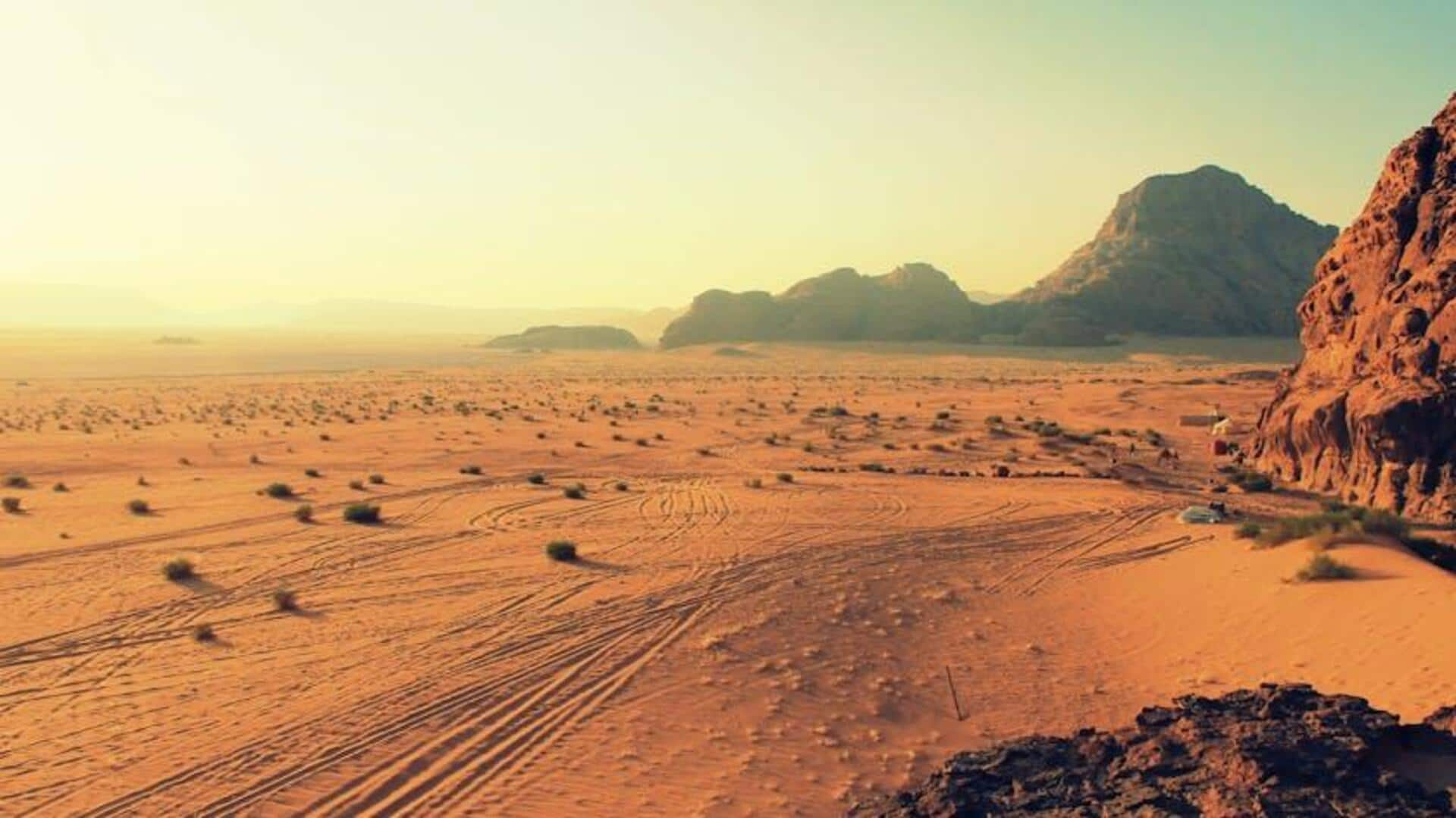
Mastering the sands: Essential tips for desert survival
What's the story
Deserts are unforgiving. Scorching heat, scarce water, and endless horizons make every step a test of endurance.
Knowing how to navigate the shifting sands alone can mean the difference between life and death.
This guide offers practical advice to conquer the desert's harsh reality.
Discover the secrets of finding water, beating the heat, and more. Master the art of desert survival.
Water sources
Finding water sources in deserts
Water is the key to survival in the desert. Search for signs of life like vegetation or animal tracks leading to springs or streams.
Harvest precious dew from plants in the early morning using cloths or plastic sheets. Use a portable water filter for dubious sources.
Keep in mind, conserving your existing water supply is as important as discovering new sources.
Heat management
Managing heat and sun exposure
The sun's extreme heat in deserts can rapidly cause dehydration and heatstroke.
Wear light-colored, loose-fitting clothing: This helps prevent sunburn while still allowing air to circulate.
A wide-brimmed hat is a must: It will keep your face and neck in the shade.
Avoid the sun during peak hours: Rest between 10 a.m. and 4 p.m. when the sun is most intense. You can continue your activities when it's relatively cooler.
Navigation tips
Navigating using natural landmarks
Deserts are notorious for their featureless landscapes, which can make navigation difficult without a map or compass.
Always use natural landmarks (mountains, unique rock formations, etc.) as points of reference when traversing open terrain.
The sun is your friend! Remember, it rises in the east and sets in the west. This knowledge can help you maintain a sense of direction throughout the day.
Shelter building
Building shelter from natural materials
Building a shelter is crucial for survival as it provides protection against harsh weather conditions, including sandstorms or cold nights in deserts where temperatures plummet after sunset.
Leverage materials in your environment like rocks or branches, and supplement with tarps if you have them; this can also provide some insulation from the wind chill factor.